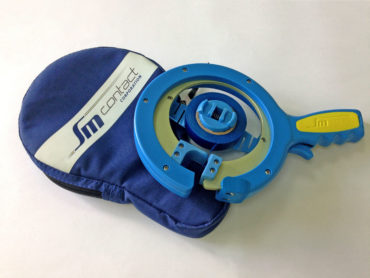The main reason for wrapping harnesses in tape is protection from abrasion, heat, moisture and chemicals. Compared with other methods for safeguarding wire harnesses, tape is easier to apply and affords greater protection. Taping compresses the harness in order to create hard areas easy for installation, in the meantime allows it to remain flexible enough to be placed easily in hard-to-reach spots. Wires are bundled compactly with gaps or overlapping, to the smallest diameter, which is important in applications such as automotive.
Wire harness taping tool, compared with hand wiring (just a worker with a roll of tape), “works” several-fold faster with consistent results, besides the process is convenient and not physically demanding. Instead of awkwardly transferring the tape roll from hand to hand around the harness, operator inserts the harness into the center of the tool and then simply moves the tool in an up-and-down circular motion. It requires some practice, so operator should be trained to use the tool.
Though a hand taper is not motorized, it does maintain constant tension on the tape during wrapping. Also automation is not suitable for small “branched” areas to be taped right on the wire harness assembly board.
Splice connections are widely used by automotive components suppliers of VW, BMW, PSA, Renault, etc.
SM Contact developed a manual taping tool for quick, convenient and qualitative wrapping. TapiX, resembling a table tennis racket in shape and size, can be used to wrap harnesses as thick as 23 mm diameter.
 English
English
 Chinese
Chinese
















 +86- 20-3992 0957
+86- 20-3992 0957






